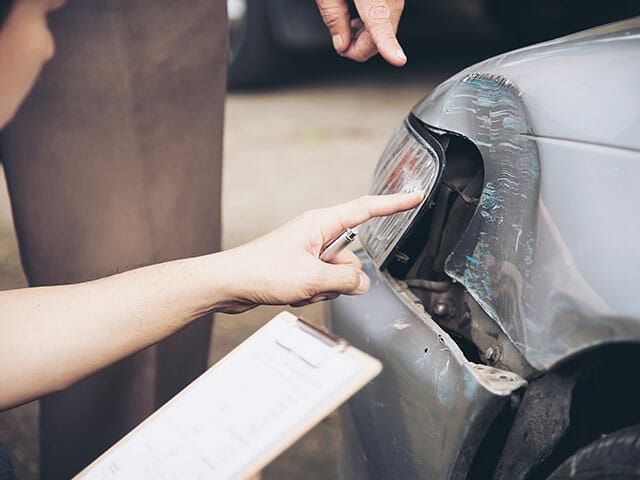Assessing Responsibility in a Multi-Car Accident
No one steps out the door expecting to get into a car accident, much less a big multi-car incident involving lots of damage and trauma. However, this scenario plays out every year, especially on highways and roads with lots of traffic, poor visibility and plenty of risks for momentary bad decisions. The result ends up being serious injuries, multiple wrecked cars and vehicles and many wondering exactly who was responsible for the chaos that only took a few seconds to play out but has changed lives forever.
Multi-car accidents also tend to occur where there’s a higher concentration of drivers under stress. Rush-hour conduits, traffic jams, foggy days or nights with bad weather and roads near big events like concerts or sports games tend to have a high probability of car accidents. Many drivers are distracted or are not used to driving in bad conditions, or they get frustrated easily and make rash decisions. It’s a formula for decisions that end up having big consequences.
The impact of being a victim in a multi-car accident is profound as well. First, more than likely, a victim has been injured multiple times. As cars repeatedly hit each other, the victims in the center of the accident tend to suffer more than those on the periphery and the last to make contact. Vehicles are heavy, moving objects that can transfer a lot of energy into what they hit, even at a slower speed. That in turn means a victim who is moderately injured from the first hit can become critical from multiple impacts in the following seconds. What might have been a fracture can turn into a permanent life-changing loss because of the exacerbation of the crash again and again. This is very much the case where a victim has spine or neck injuries.
How is Fault Determined in a Multi-Car Accident?
The biggest problem of a multi-car accident involves piecing together exactly what occurred. For example, in a single-vehicle accident, the road can provide a lot of information on when someone hit the brakes, how long they had before impact, where the accident actually occurred and the results after. But in a multi-car accident, the evidence can be wiped out in mere seconds by additional crashes, debris, and residue. Worse, those involved who are trying to remember exactly what occurred tend to be highly inaccurate and fuzzy, at best. So where does a party start?
Interestingly, most multi-car accidents start with someone failing to do what they were supposed to in the moments leading up to the accident. So, using this as a baseline, investigators start with what one would expect for normal driving, and anything that is a deviation from that norm becomes suspect. Reviewers actually do have quite a bit to work with. Most multi-car accidents tend to have a very big response from emergency services and highway patrol. Every one of these actors is taking notes and creating reports on what they see, what has occurred and what they are dealing with. That together begins to paint a picture, car by car, location by location, of what happened. Add in people’s phones, photographs, witness statements, vehicle sensors and similar input, and the picture begins to flesh out in totality. It takes work, but the details of the accident begin to accumulate.
How to Prove Fault in a Multi-Car Pileup
When the story comes together, the elements of negligence begin to become apparent. Every driver on the road has certain responsibilities. Even a common private citizen driving on a public road is expected to obey traffic laws, watch for other traffic and travel at a safe speed. Commercial drivers have even greater responsibilities and go through additional training to qualify for a specialized driver’s license to operate on public roads. As a result, big accidents tend to happen because someone either made a bad mistake, became distracted, or was outright careless in a driving decision. This then turns into injury and damage to others, and that creates the basis for a claim of negligence; in a multi-car accident, that could involve more than one driver.
A driver in front of traffic might be eating instead of fully paying attention to the road. She drops food, panics and tries to clean off her clothes, and her car steers into the next lane. The car nearby realizes she’s coming over and over-corrects to avoid the impact or slams on the brakes. A third truck driver behind doesn’t have room to stop safely because he was following too close, and he impacts the second vehicle from the rear. That sends the second driver forward into the first driver, who swerves uncontrollably the opposite way and hits a fourth car on the other side which was speeding to get past the crowd. And the story goes on. Multiple bad decisions oftentimes create multi-car accidents. And it all happens within seconds of the initial mistake.
The duties involved here are many. The first driver had a duty to watch the road, but she didn’t. The evidence is in the food receipt in the car and the food stain on her clothes. The second driver has impact marks on the far side of his car from over-correcting and hitting the guard rail and impacting with the first car. The truck driver has frontal impact, which in most cases makes him responsible for that impact, as the driver behind should be keeping a safe distance from the car in front. As can be seen in just this basic example, it’s important to consider legal perspectives, and seeking guidance from truck accident attorneys can help you understand the relevant duties and potential outcomes resulting from the individual drivers’ breaches of duty.
Who is to Blame in a 3-Car Pile-up?
The method of determining responsibility takes expertise and experience. In this regard, a qualified civil attorney versed in traffic laws is needed. The approach starts with a full investigation of all the facts and details available about the accident. Many of the records collected by law enforcement at the scene become fundamental in identifying what occurred and why. The second step involves identifying all of the losses a victim suffered from the accident, ranging from medical bills and suffering to property loss for a vehicle to income loss for being unable to work afterwards. From this point, the attorney then engages with the insurance companies providing coverage for the other vehicles. Obviously, these parties have a vested interest in keeping their costs down, so the attorney involved must aggressively press the matter in negotiation. The above fact-gathering works to this advantage. Where an insurance company refuses to negotiate, then the attorney and victim can pursue the matter in court with a lawsuit. The court then defines the level of responsibility of the various parties and rules on the amount of damages they must pay. Often, because of the cost of litigation and the risk of loss, insurance companies realize going to court could be far more expensive than negotiation and reaching a settlement.
What to do if Involved in a Multi-Car Accident
If you find yourself in a multi-car accident, the last thing you should be worried about at that exact moment is who will pay for everything. The first priority is your medical safety. If you are badly hurt, try to stay still and don’t move if not necessary. Wait for medical personnel to arrive. If you must leave the car for your safety, get help if needed and get to a safe distance. If you are able to, try to take pictures with a phone, record a description of what you see, and try to get witnesses’ names and contact information. Every bit will help. Don’t worry about quality; quantity is better. Try to photograph as much as you can, as today’s phones are capable of incredible detail capture. If you are able as well, try to get other drivers’ information, vehicle numbers and insurance as well.
At the accident, if not injured badly, make a statement to the police. One, you’re on record, and two, your statement will include your memories while they are fresh. An amazing amount of detail in memory can be lost in a few days. Then, contact your insurance company and put a claim in motion for coverage. Don’t worry about fault at this time; just get the report in so the processing begins. An adjuster will contact you for details as needed.
Plan for Your Own Representation vs. Insurance
When you are able, obtain a copy of the accident report filed by law enforcement. A certified copy is best. It is then time to talk with a qualified car accident lawyer for representation. Your insurance company may contact you in the meantime, and there may be offers to settle the matter from other insurance companies. This is common, but you should not accept these offers without letting your attorney review the matter fully. Many times such early settlements are low and don’t take into account everything you may need for recovery. Sometimes the opposing insurance companies may try to contact you directly. Don’t communicate at all – instead, refer them to your attorney.
The car accident lawyers at Terry Bryant Accident & Injury Law provide experienced representation to victims of multi-car accidents in the greater Houston area. Terry Bryant has been handling personal injury cases for more than 40 years, providing zealous representation and advocacy for accident victims, especially those in complicated accidents with multiple parties. Don’t leave it to the insurance companies to figure out; they are interested in their bottom line, not your full recovery. Instead, call Terry Bryant Accident & Injury Law now at (713) 973-8888 for your free consultation and to better understand your potential claims.
Attorney Terry Bryant
 Terry Bryant is Board Certified in personal injury trial law, which means his extensive knowledge of the law has been recognized by the Texas Board of Legal Specialization, setting him apart from many other injury attorneys. The 22 years he spent as a Municipal Judge, Spring Valley Village, TX also provides him keen insight into the Texas court system. That experience also helps shape his perspective on personal injury cases and how they might resolve. This unique insight benefits his clients. [ Attorney Bio ]
Terry Bryant is Board Certified in personal injury trial law, which means his extensive knowledge of the law has been recognized by the Texas Board of Legal Specialization, setting him apart from many other injury attorneys. The 22 years he spent as a Municipal Judge, Spring Valley Village, TX also provides him keen insight into the Texas court system. That experience also helps shape his perspective on personal injury cases and how they might resolve. This unique insight benefits his clients. [ Attorney Bio ]


 Terry Bryant is Board Certified in personal injury trial law, which means his extensive knowledge of the law has been recognized by the Texas Board of Legal Specialization, setting him apart from many other injury attorneys. The 22 years he spent as a Municipal Judge, Spring Valley Village, TX also provides him keen insight into the Texas court system. That experience also helps shape his perspective on personal injury cases and how they might resolve. This unique insight benefits his clients. [
Terry Bryant is Board Certified in personal injury trial law, which means his extensive knowledge of the law has been recognized by the Texas Board of Legal Specialization, setting him apart from many other injury attorneys. The 22 years he spent as a Municipal Judge, Spring Valley Village, TX also provides him keen insight into the Texas court system. That experience also helps shape his perspective on personal injury cases and how they might resolve. This unique insight benefits his clients. [ 

